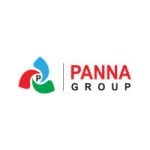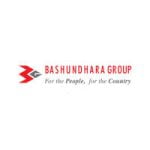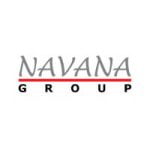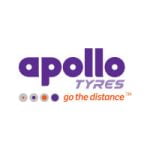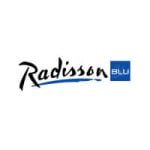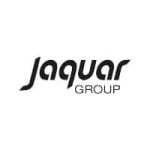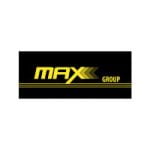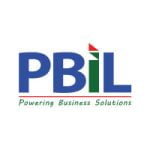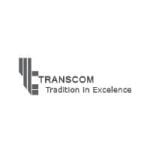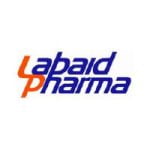Different types of led signage
LED signage comes in various forms and can be categorized into different types based on their purpose, design, and functionality. Here are some common types of LED signage:
LED Display Boards: These are large LED screens used for advertising, information display, or entertainment purposes. They are often found in public spaces, stadiums, shopping malls, and transportation hubs.
LED Billboards: These are large outdoor LED displays used for advertising on highways, city centers, and other high-visibility areas. LED billboards provide dynamic and eye-catching visuals.
LED Video Walls: A video wall consists of multiple LED panels arranged seamlessly to create a larger display. They are commonly used in event venues, control rooms, and corporate settings for presentations, live video feeds, and immersive experiences.
LED Message Signs: These are LED signs used to display text messages or simple graphics. They are often used in retail stores, restaurants, banks, and other establishments to convey information or promotional messages.
LED Scoreboards: LED scoreboards are commonly used in sports arenas and stadiums to display real-time scores, game information, and advertisements.
LED Channel Letters: These are three-dimensional LED signs typically used for outdoor business signage. Channel letters are individual letters or symbols illuminated with LEDs, creating an attractive and distinctive visual effect.
LED Neon Signs: LED neon signs mimic the look of traditional neon signs but use LED technology instead. They offer energy efficiency, flexibility, and customizable designs while still providing a neon-like glow.
LED Directional Signs: These signs are used to guide people and provide directions in public spaces such as airports, train stations, hospitals, and large complexes. LED directional signs often include arrows, symbols, and text.
LED Menu Boards: Commonly found in restaurants, cafes, and fast-food chains, LED menu boards display menus, pricing, and specials. They are easily customizable, allowing for dynamic updates.
LED Safety Signs: LED safety signs are used to convey safety information and warnings in industrial settings, construction sites, and public areas. They include signs for emergency exits, fire safety, caution signs, and more.
These are just a few examples of the different types of LED signage available. LED technology offers versatility, energy efficiency, and vibrant displays, making it a popular choice for various applications.
- LED Display Boards
- LED Billboards
- LED Video Walls
- LED Message Signs
- LED Scoreboards
- LED Channel Letters
- LED Neon Signs
- LED Directional Signs
- LED Menu Boards
- LED Safety Signs
- LED Outdoor Signs
- LED Indoor Signs
- LED Window Displays
- LED Programmable Signs
- LED Moving Message Signs
- LED Digital Posters
- LED Information Boards
- LED Wayfinding Signs
- LED Traffic Signs
- LED Parking Signs
- LED Exit Signs
- LED Open Signs
- LED Retail Signs
- LED Real Estate Signs
- LED Bus Stop Signs
- LED Taxi Signs
- LED Airport Signs
- LED Stadium Signs
- LED Theater Marquee Signs
- LED Healthcare Signs
- LED Hotel Signs
- LED Restaurant Signs
- LED Bar Signs
- LED Casino Signs
- LED Gas Station Signs
- LED Pharmacy Signs
- LED School Signs
- LED Church Signs
- LED Bank Signs
- LED Office Signs
- LED Trade Show Displays
- LED Exhibition Signs
- LED Promotional Signs
- LED Event Signs
- LED Rental Signs
- LED Transparent Signs
- LED Ceiling Signs
- LED Floor Signs
- LED Tabletop Signs
- LED Interactive Signs
- LED Touchscreen Signs
- LED Video Banners
- LED Media Facades
- LED Architectural Lighting
- LED Backlit Signs
- LED Logo Signs
- LED Lightboxes
- LED In-store Displays
- LED Window Signs
- LED POP Displays (Point of Purchase)
- LED Retail Shelving Signs
- LED Acrylic Signs
- LED Edge-lit Signs
- LED Frame Signs
- LED Promotional Counters
- LED Hanging Signs
- LED Trade Show Booth Lighting
- LED Projection Mapping Displays
- LED Interactive Floor Systems
- LED Interactive Wall Systems
Different types of neon signage
Neon signage has been widely used for decades and has a distinct retro aesthetic. Although traditional neon signs are made using gas-filled glass tubes, modern LED technology has also been used to replicate the look of neon. Here are some different types of neon signage:
Traditional Neon Signs: These are the classic neon signs made with glass tubes filled with different gases, typically neon or argon. The tubes are bent into various shapes and sizes to form letters, symbols, or images. When electrified, the gas inside emits a vibrant glow.
LED Neon Signs: LED neon signs are a more recent development that mimic the appearance of traditional neon signs but use LED technology. These signs are made with flexible LED strips encased in a silicone or plastic tube, creating the illusion of neon lighting. LED neon signs offer energy efficiency, durability, and easier customization compared to traditional neon signs.
Neon Open Signs: Open signs are commonly found in storefronts to indicate that a business is open for customers. Neon open signs are available in various designs, usually featuring the word "OPEN" in bright, glowing neon or LED lights.
Neon Bar Signs: Bar signs often incorporate neon lighting to create an inviting and lively atmosphere. These signs can display the name of the bar, beer brands, cocktails, or other themed designs.
Neon Art Signs: Neon art signs are decorative pieces created with neon lighting. These signs can feature abstract designs, words, or phrases and are often used in art installations, galleries, or as unique home decor.
Neon Motel Signs: Neon signs have been commonly used by motels and hotels to attract guests. Motel signs typically feature the name of the establishment along with other elements like arrows, stars, or thematic designs.
Neon Signage for Restaurants: Restaurants often use neon signs to display their name, logos, or food-related messages. Neon signs can add a retro, eye-catching element to the restaurant's exterior or interior decor.
Neon Vehicle Signs: Neon signs are sometimes used on vehicles, particularly in commercial settings. Delivery trucks, food trucks, or advertising vehicles may incorporate neon signs to draw attention and promote their business or product.
Neon Signage for Events: Neon signs can be customized for events such as weddings, parties, or corporate gatherings. They can display event names, logos, or specific messages to create a festive atmosphere.
These are just a few examples of the different types of neon signage. Whether traditional or LED-based, neon signs continue to be popular for their unique, nostalgic appeal and ability to create captivating visual displays.
Different types of digital signage
Digital signage encompasses a wide range of display technologies used to present dynamic content and information. Here are various types of digital signage:
Digital Display Screens: Standard digital screens that display static images, videos, or slideshows. They are commonly found in retail stores, airports, and other public spaces.
Video Walls: Large displays consisting of multiple screens tiled together to form a single, larger display. Video walls are often used for immersive visual experiences or showcasing high-resolution content.
Touchscreen Displays: Interactive displays that allow users to interact with the content by touching the screen. They are frequently used in malls, museums, and information kiosks.
Outdoor Digital Signage: Displays designed to withstand outdoor conditions, providing advertising or information in outdoor environments such as bus stops, stadiums, and city centers.
Indoor Digital Signage: Displays used within indoor environments such as malls, hotels, and corporate offices to convey information, advertisements, or entertainment.
Wayfinding Digital Signage: Interactive or dynamic displays used for navigation and directions in complex areas like airports, hospitals, or large campuses.
Menu Boards: Digital displays used in restaurants, cafes, and fast-food chains to showcase menus, pricing, specials, and nutritional information. They can be easily updated and customized.
Digital Posters: Slim, standalone displays used to present advertisements, announcements, or promotional content in high-traffic areas like shopping malls or cinemas.
Interactive Kiosks: Self-service kiosks equipped with touchscreens that allow users to access information, place orders, or complete transactions independently. They are commonly used in retail, banking, and transportation sectors.
Information Boards: Displays used to present real-time information such as news, weather updates, or social media feeds. They are often found in public spaces, corporate lobbies, or transportation hubs.
Digital Menu Boards: Dynamic displays used in restaurants and fast-food chains to showcase menus, pricing, and promotions. They can be updated remotely and tailored to different times of the day or specific locations.
Corporate Communication Screens: Displays used within offices and corporate environments to disseminate internal communications, company updates, or employee information.
Digital Signage Video Shelves: Displays that mimic traditional shelves and showcase products with dynamic video content or live feeds, enhancing product visibility in retail settings.
Real-Time Data Displays: Digital signage that presents live data such as stock market updates, transportation schedules, or social media analytics. They are often used in control rooms or information centers.
Mobile Digital Signage: Portable digital displays mounted on wheels or carried by individuals to provide mobile advertising or information in events, trade shows, or exhibitions.
Transparent Displays: Displays with transparent screens that allow viewers to see through the screen while displaying dynamic content. They are often used in showcases, museums, or retail settings.
Digital Window Displays: Digital screens installed on storefront windows to attract customers with engaging content and promotions.
In-Store Promotional Displays: Smaller digital displays used within retail stores to promote specific products, discounts, or cross-selling opportunities.
Interactive Mirror Displays: Displays integrated into mirrors, allowing users to view dynamic content while simultaneously seeing their reflection. They are commonly used in fashion retail or fitting rooms.
Augmented Reality (AR) Digital Signage: Displays that combine real-world environments with computer-generated content, providing interactive and immersive experiences.
These are just a few examples of the different types of digital signage available. Digital signage offers versatility, real-time content updates, and interactive capabilities, making it a powerful tool for communication, advertising, and information dissemination in various industries.
Types of safety signage
Safety signage plays a crucial role in promoting a safe and secure environment by providing visual cues and instructions. Here are various types of safety signage:
Emergency Exit Signs: Signs indicating the location of emergency exits in buildings, typically featuring a running figure or an arrow pointing towards the exit.
Fire Safety Signs: Signs related to fire safety, including fire extinguisher signs, fire alarm signs, and fire exit signs.
Hazard Signs: Signs warning of specific hazards or dangerous conditions, such as chemical hazards, electrical hazards, slipping hazards, or radiation hazards. These signs often use pictograms or symbols to convey the message.
Safety Equipment Signs: Signs indicating the presence or location of safety equipment, such as first aid kits, eye wash stations, safety showers, or personal protective equipment (PPE) like hard hats, goggles, or gloves.
Construction Safety Signs: Signs used in construction sites to communicate safety precautions, restricted areas, hard hat zones, and other construction-related hazards.
Traffic Signs: Signs used on roads, parking lots, and industrial areas to regulate and direct traffic flow, including speed limit signs, stop signs, yield signs, and warning signs for pedestrian crossings.
Warning Signs: Signs used to warn individuals about potential dangers or hazards in a specific area, such as high voltage signs, toxic substance signs, or biohazard signs.
Prohibition Signs: Signs that communicate actions or behaviors that are not allowed, such as no smoking signs, no entry signs, or no parking signs.
Safety Procedure Signs: Signs that outline safety procedures or instructions for specific activities, such as operating machinery, handling hazardous materials, or using safety harnesses.
Safety Awareness Signs: Signs designed to promote safety awareness and encourage safe behavior, including reminders to wear safety goggles, practice good ergonomics, or maintain cleanliness in the workplace.
Personal Protective Equipment (PPE) Signs: Signs reminding individuals to wear specific PPE, such as safety glasses, ear protection, or high-visibility vests in designated areas.
Evacuation Route Signs: Signs displaying evacuation routes and assembly points during emergency situations, typically found in buildings, schools, or public spaces.
Lockout/Tagout Signs: Signs used to indicate that equipment or machinery is locked out or tagged out for maintenance or repair, preventing accidental operation.
Workplace Safety Signs: Signs promoting general workplace safety practices, such as "Watch Your Step," "Clean Up Spills," or "Report Hazards."
COVID-19 Safety Signs: Signs related to COVID-19 safety protocols, including reminders for social distancing, mask-wearing, hand hygiene, and occupancy limits.
Security Signs: Signs indicating the presence of security measures, such as CCTV surveillance signs, restricted access signs, or security check signs.
Electrical Safety Signs: Signs providing guidance on electrical safety, including warnings about high voltage areas, electrical shock hazards, or the presence of electrical equipment.
Machine Safety Signs: Signs indicating safety precautions and procedures for operating specific machinery or equipment, such as lockout/tagout instructions or warnings about rotating parts.
Workplace Hygiene Signs: Signs promoting good hygiene practices, such as handwashing signs, reminders to cover coughs and sneezes, or instructions for proper waste disposal.
Workplace Ergonomics Signs: Signs promoting ergonomic practices and proper body mechanics, including reminders for proper lifting techniques or adjusting workstation setups.
These are just some examples of the different types of safety signage available. Safety signage plays a crucial role in preventing accidents, promoting compliance with safety protocols, and creating a secure environment for individuals in various settings, including workplaces, public spaces, and construction sites.






